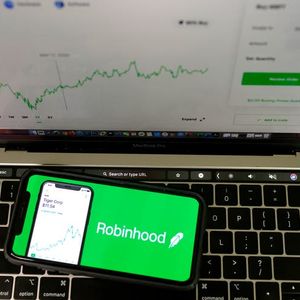BITO: Potential Interesting Way To Gain Bitcoin Exposure
4 min read
Summary Year-to-date, spot ETFs have attracted over $36 billion in inflows, with ProShares Bitcoin Strategy ETF (BITO) benefiting indirectly from Bitcoin’s rapid ascent. Registered Investment Advisors (RIAs) are increasingly recommending crypto, with 40% already doing so and 56% planning to, driving spot ETF inflows. Bitcoin’s current phase is high profit/low volatility, potentially leading to an acceleration phase with price appreciation and increased volatility. MicroStrategy continues its aggressive Bitcoin acquisition strategy, aiming to raise $84 billion to buy more Bitcoin, reinforcing long-term demand. Year-to-date the spot ETFs have gathered inflows over $36 billion. Holders of ProShares Bitcoin Strategy ETF (BITO), based on Bitcoin futures, benefits indirectly from this next generation of ETFs as it is the availability of easy access that likely contributes to the speed of Bitcoin’s ascent. Since mid-April flows have accelerated and $5.3 billion has come into the spot ETFs. Either driving the price or attracted to the surge in the Bitcoin price. Data by YCharts Registered Investment Advisors (RIAs) are increasingly allocating client portfolios. See this graphic from the 2025 RIA ETF Trends report: : thematic ETFs (2025 RIA trend report) According to the DACFP and Franklin Templeton Digital Assets Survey 40% of financial advisors recommend crypto to clients. Among advisors not doing so yet, 56% said they planned to do so in the future. This seems consistent with the inflows into the spot ETFs. This institutional wave should make for an increasingly sticky, long-term demand base different from previous market cycles. Increasingly, it seems Bitcoin is indeed becoming a less volatile asset. In an interesting blog by Fidelity Digital Assets they identify four phases that Bitcoin cycles through. They score the number of holders that are in profit vs the volatility of the asset. I’d say we would currently be in the high profit/low volatility phase. They argue this is often followed by the acceleration phase which is when the price appreciates and volatility goes up. This doesn’t happen with a lot of assets but Bitcoin can go on rallies where the volatility also increases. Bitcoin phases (Fidelity.com) Fidelity actually identified Bitcoin as being in the Acceleration phase (with reversal phase coming) in February 2025. The reversal and bottoming phases tend to be much longer. However, it is possible the tariff chaos has sped up this cyle. Fidelity specifically mentions large macro events (like Covid) messing up the framework. However, the relatively low volatility is still an important and I’d argue favorable current dynamic. I usually look into Bitcoin exchange holdings as a shorter-term indicator as well. Not something to rely on wholly but it can help to assess where we are. Data generally shows a long-term downtrend in Bitcoin held on exchanges. Recent data shows higher outflows than inflows, suggesting coins are moving into cold storage or private wallets for longer-term holding. This means fewer Bitcoin are held on hand to sell. The Mt.Gox liquidation remains a spector that’s hanging over the market that we just don’t seem to be able to get rid off. The current deadline for distributing Bitcoin to former account holders is Oct 31, 2025. This means ~35,000 BTC (a decent portion has been distributed already) is likely coming to the market in the second half of 2025. Some of it will still be held of course and there is also the possibility of further delays (happened many times before). It is no longer the concern it once was but something to be mindful of still. On the other hand the creation of the Bitcoin reserve means around ~200k Bitcoin are unlikely to get released anytime soon. Then there is Strategy ($MSTR), aka MicroStrategy, which just doubled down on its 21-21 capital plan by upping the stakes to a 42-42 capital plan. The company aims to raise $84 billion (50-50 equity and debt) to buy Bitcoin. The company holds around 555,450 Bitcoin. It paid $38 billion to buy it and it is valued at around ~$55 billion currently. Meanwhile the company trades at a market cap of $113 billion and an enterprise value of $123 billion. Just last week it issued around $180 million in equity. As long as the company trades at a premium to the crypto on its balance sheet it can theoretically issue equity to buy more Bitcoin. This has been going on for a long time and I expect it to continue. What I don’t love about BITO is the relatively high cost of 0.95%. In How To Choose Between The Bitcoin ETF’s I show the difference is quite meaningful. Futures often suffer from roll yield and that impacts BITO as well. Finally, it distributes earnings on a monthly basis. In niche cases I can imagine there could be tax benefits to this. bull call spread payoff profile (optionstrat.com) One way I think is currently interesting to gain exposure is by buying a call spread (not necessarily this wide or this expiration). The example below illustrates an intance where the max loss would be $119 and the max profit $680 by expiration at the end of this year. Because both implied volatility, and call volatility are currently relatively low for Bitcoin this seems even more attractive than outright owning the asset. In addition Bitcoin has the ability to rally while volatilty expands which would help as well. Keep in mind that if the underlying doesn’t get to $22 by expiry the entire outlay for the call spread is gone. If the price rallies above $30 there’s no further upside. In addition BITO is paying monthly distributions which makes it harder to hit $23.20 from where the call spread theoretically breaks even (if volatility stays the same). It can be worthwhile to compare and contrast with the options chain of IBIT that is also very active.

Source: Seeking Alpha



